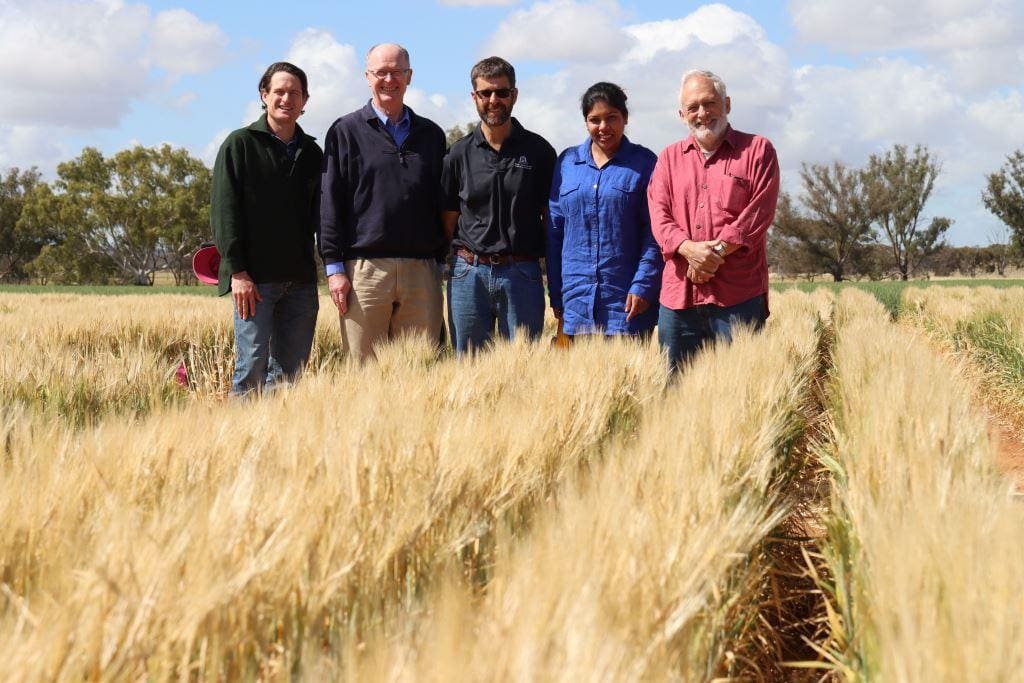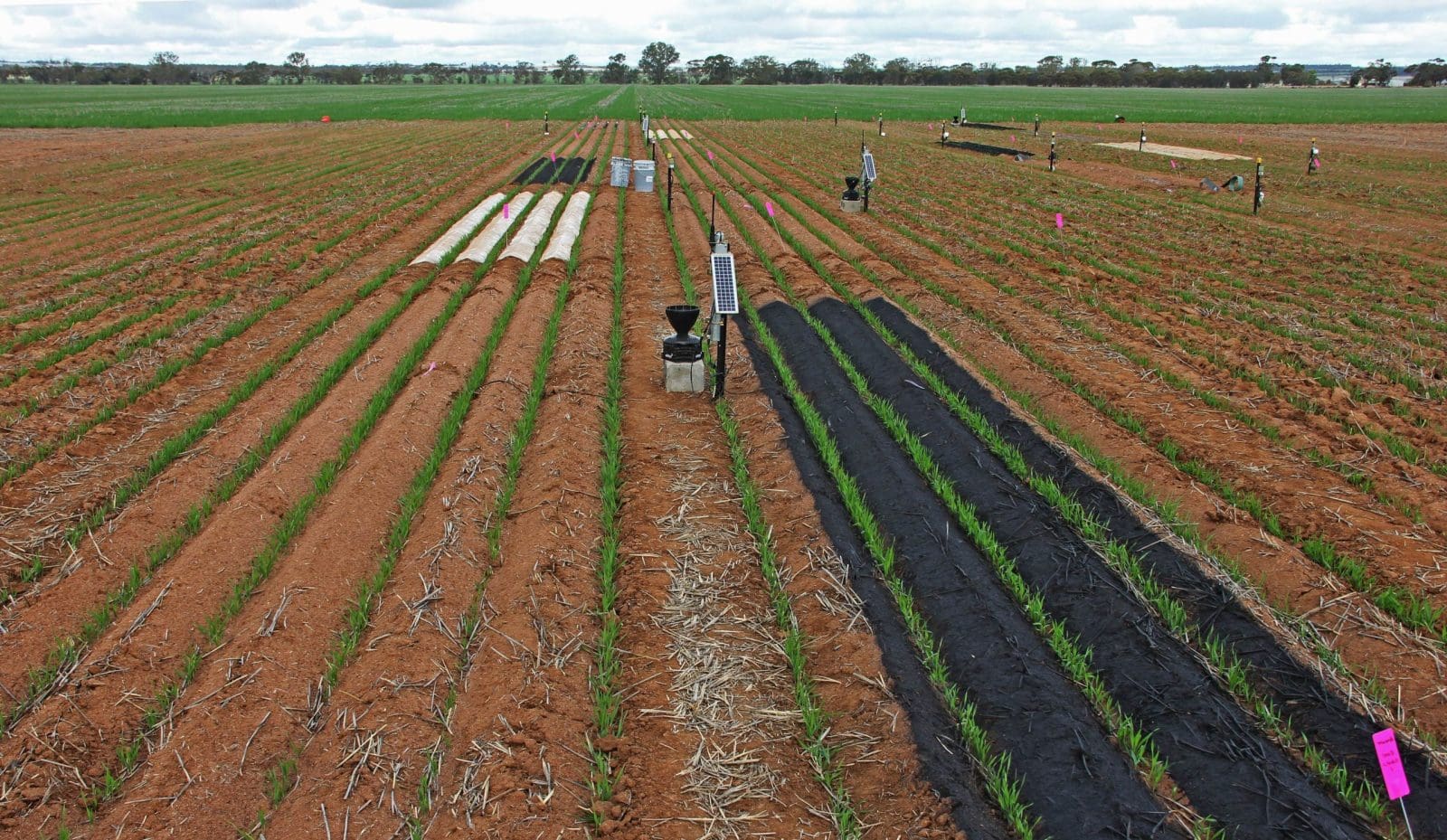
DPIRD officers Wayne Parker, Glen Riethmuller, David Hall, Rushna Munir and Ed Barrett-Lennard at a water-harvesting trial site at Merredin Research Station. Photo: DPIRD
EASTERN grainbelt growers farming sodic clay soils have access to improved information and techniques to reduce production risk and increase profitability, following research by Western Australia’s Department of Primary Industries and Regional Development.
DPIRD principal research scientist David Hall said sodic and dispersive clay soils were an important soil type in the eastern wheatbelt of Western Australia, covering about 2 million hectares.
“These soils are often highly productive where soil water is not limiting,” Mr Hall said.
“However, in most seasons restricted water availability severely limits crop production, due to a combination of physical and chemical soil constraints that impede water entry, storage and uptake.”
The four-year DPIRD project, which includes investment from the Grains Research and Development Corporation, has identified novel systems for managing sodic soils with substantial yield increases.
Experiments across five sites from Devils Creek in the northern wheatbelt to Ravensthorpe in the south explored various soil-amelioration techniques that increased water infiltration or decreased soil evaporation.
“The findings indicate that certain practices, including micro water harvesting with waterproof membranes and mineral mulches, have shown promise in lifting grain yield and improving soil conditions, with average yields increasing by 0.5-0.6 tonnes/ha across more than 15 experiments,” Mr Hall said.
“Micro water harvesting involves harvesting water from the inter row into the seeded row.
“This requires applying a waterproof membrane to shed water.
“Membranes including biodegradable polymers gave significant yield increases and showed promise as an alternative to plastic sheeting.”

A Merredin Research Station trial compares black polymer, plastic sheeting and no membrane for harvesting water from the inter row to the seeded row. Photo: DPIRD
Mineral mulches, namely sand and gravel, halved soil evaporation and significantly increased grain yield at almost every site where the treatment was applied.
“These mulches are a long-term solution with the economics showing that the yield benefits would need to persist for more than 10 years.”
A surprising finding was that many of these sodic and alkaline clays were unresponsive to gypsum.
“While initial results from gypsum applied in furrow (100kg/ha) showed large responses at Merredin, this was not replicated at several other sites.
“This highlights the need for better techniques to identify soils likely to respond to gypsum.
“Techniques that objectively measure the amount of clay dispersion in soil solutions with and without gypsum are currently being investigated.”
Mr Hall said deep tillage on sodic and dispersive clay soils was not recommended.
“The research also highlights the complex interactions between soil chemistry, clay dispersion, and crop yield, emphasising the need for further understanding and refinement of soil management techniques.”
More information about the project is available from the DPIRD website.
Source: DPIRD

HAVE YOUR SAY